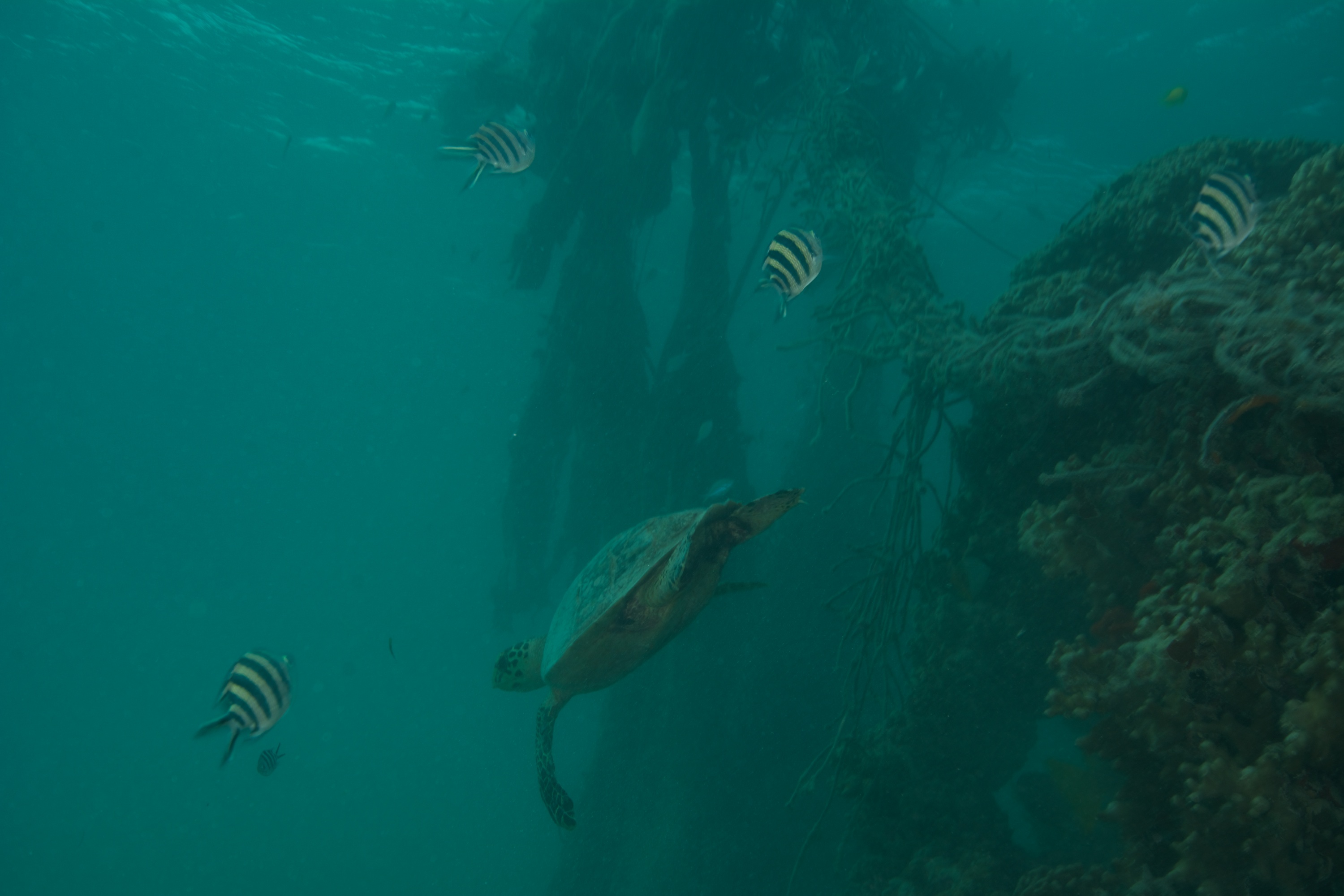Floating menaces
A fish aggregation device, or FAD as it is commonly called, is generally a very simple, low-cost structure that increases fishing efficiency. It typically comprises a bamboo raft fitted with buoys for flotation (Figure 1) and has long ropes and netting hanging beneath it (Figure 2). A floating location beacon is also attached to the raft to enable its parent fishing vessel to locate it with its tracking technology.
Floating structures on the ocean’s surface attract fish – both juvenile and adult – in great numbers and diversity. Why they do so is to a large extent poorly understood, although there are a number of theories for the fishes’ aggregating behaviour. The most common suggestion is that FADs afford the fish protection from predators, either directly through the shelter they provide or indirectly through some other interference mechanism, such as camouflage or mimicry, that affects the predator’s ability to capture prey.
FADs can either be anchored or drifting. More and more often, drifting FADs are being found snagged in the coral around D’Arros Island and they even get washed into the neighbouring St Joseph Lagoon. So recently the D’Arros Research Centre team set aside time to remove all the FADs stuck in the deep lagoon. Although they can impact negatively on the ecosystem in several ways, such as by catching juvenile fish and vulnerable non-target species (Figure 3), our more immediate concern is that turtles, manta rays and other inhabitants of the lagoon can become entangled in them. (Figure 4)

Recently a hawksbill turtle Eretmochelys imbricata had to be rescued after being found entangled in a FAD. Luckily it had not been trapped for very long, as it had no serious visible injures.
Working as carefully as possible, the team used knives to cut the FADs from the delicate coral. (Figure 5) The structures were then hauled onto Minion and transported slowly to the camp on St Joseph Atoll to be dismantled. The location devices make comfortable stools and foot rests around the campfire, while extra ropes and buoys are always useful around camp.




